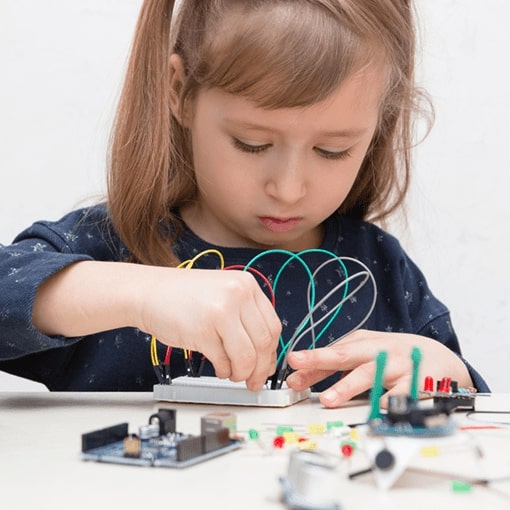Teaching kids to code doesn’t have to be complicated. If you’re moving into a teaching role which now expects knowledge of coding… don’t fret. In this list of coding vocabulary for students, we’ll provide a detailed glossary of coding words along with tips on how the words can be related to everyday language along with some unique words which relate only to the computer science world.
Be warned, this is not an exhaustive list. But the coding words we’ve included will kick-start you and your pupils’ journey into the exciting world of coding. Use it to help your own understanding or provide pupils with the list to expand their own use of coding language.
Abstraction
A simple version of something which is more complex
Accessibility
The ease of use for users around products, services, devices and programs. This includes limitations around compatibility with older technology or even the physical and mental disabilities of the user
Algorithm
A group of steps within a task
Binary
Computer language, information represented using only two options
Binary alphabet
The two options used in binary code (as above)
Bit
Single unit of information, usually shown as a 0 or a 1. The word is a shortened version of “binary digit”
Block-based programming language
Any language for programming that allows its users to drag ‘blocks’ rather than the traditional code writing method. The most popular example of this is today is Scratch. Can also be referred to as ‘drag-and-drop’ or ‘visual coding’
Bug
An error that prevents a program from running successfully or completing as planned
Byte
A measure of digital data, 8-bits go into a byte. Scaled up as kilobytes (KB), megabytes (MB) and gigabytes (GB)
Data
Digital information, the inputs and outputs of computers
Debugging
Discovering and solving problems within algorithms and programs
Decomposing
Assessing and breaking a problem down into more manageable pieces
Define (function)
Understanding the detail within the problem that you’re trying to solve
Digital citizen
A safe, responsible, respectful user of the Internet
Digital footprint
Information that is found about individuals on the Internet
Domain Name Service (DNS)
The service that translates URLs into IP addresses
Event
An action that causes something to happen in computing
Event handler
The most common is the mouse-click. Event-handler coding only comes to life when a certain action is performed by the user
For loop
A loop with a predetermined beginning and end which can be repeated if certain conditions are met
Function
A piece of code that you can easily be called repeatedly
Function call
Added to a program to indicate that the program should run the code inside a function, at a certain time
Function definition
The code inside a function that instructs the program on what to do when the function is called
If statement
Engages ‘conditional statements’ within code or programs, a common programming structure
Input
The term for giving information to a computer
Internet Protocol (IP) address
A unique number assigned to any piece of technology that is connected to the Internet
Iteration
A repeated action, usually part of a programming loop
Loop
The action of doing something repeatedly
Call (variable)
Use a variable in a program
Call (function)
Code that’s added to a program to tell the program to run code inside a function at a certain time
Code
The language used to tell computers what the user wants it to do
Command
Commands that are strung together can make up algorithms and computer programs and are ultimately instructions for the computer
Computational thinking
Facing a problem so it can be modelled and solved by a computer. Made up of four key strategies: decomposition, pattern matching, abstraction, algorithms
Computer science
Using computing power and technology to solve problems
Conditionals
Statements that only run under certain conditions e.g true/false, if/then
Crowdsourcing
Reaching out to a wider group of programmers/coders to complete a task quicker
Cyberbullying
Potentially upsetting or distressing acts performed against another person via the internet

Output
The term for information which is given out by a computer
Packets
Smaller pieces of information that have been formed from larger pieces of information
Pattern matching
Finding similarities between code and actions
Parameter
Additional information for a function to customise it for a particular need
Pixel
A single point of digital colour or image. Contraction of “picture element”
Program
An algorithm that has been coded and can be run by a computer or machine
Programming
The skill and job of creating a computer program
Run program
Action the computer to begin the commands that you’ve coded for it
Universal Resource Locator (URL)
A simplified way for calling a web page, also known as a web address
Variable
A placeholder made for a piece of code that is likely to change
While loop
A loop that continues to repeat while a condition is ‘true’.
Workspace
A digital working place where you would write code or perform drag-and-drop coding
You can shop our entire Computing & Technology range of find out more about our fun, programmable floor robot, E.a.R.L.